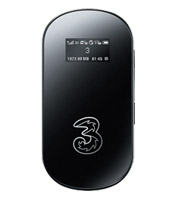
Over the last year or two, we've seen the introduction of portable wireless hotspots on most smartphones. But, while you can share your mobile data with other devices, you have to consider the huge impact on the battery and a chance you'll fall foul of restrictions on data sharing.
For occasional use, you'll probably be fine, but for anything else portable wireless hotspots are the solution to connecting multiple devices without any trouble.
The first MiFi was the perfect choice for connecting multiple wi-fi-enabled devices at home and on the go, from multiple phones, to tablets, computers, and game consoles. However, as Three has been busy upgrading its network to support HSPA+, with speeds of upto 21Mbps, you'll need to buy an all-new model if you want the fastest speeds.
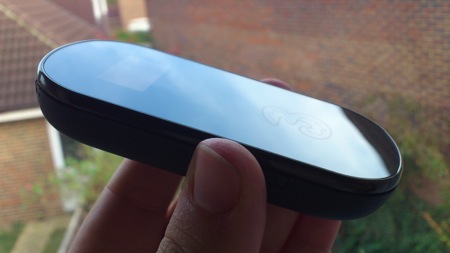
Following the release of the E367 mobile broadband dongle, which also supports Three's HSPA+ network, I was able to see just how quick mobile broadband can be. Besides higher speeds, latency is significantly reduced - all good things for speeding up web browsing and video streaming.
The problem with the USB dongle is you're limited to providing a connection to just one device, although if you've just bought the E367 then you may be interested in the ZTE MF10 'Dongle adapter', which can share your connection as long as you're near a mains supply.
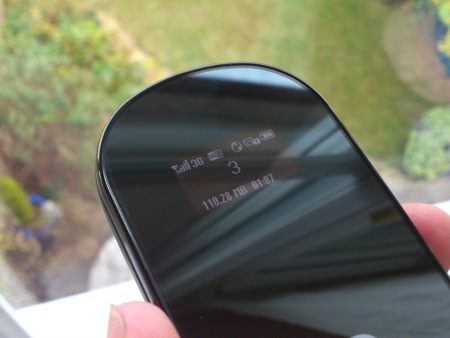
The E586 MiFi can share its mobile broadband connection with five devices at once, anywhere, thanks to an internal battery. An integrated OLED display shows when you're connected, a battery meter, and a counter of the data sent and received so far. Our review sample came with a 3GB bundle, but there are packages that include 7GB and 15GB.
Three restricts the use of a SIM card on its 'One Plan' (offering totally unlimited data) with a dongle or MiFi, so anyone taking the risk may find themselves disconnected. It's not clear how they detect usage in this way, but they could be checking the equipment serial number or the data packets. Either way, it's a no no.
All of the connected devices can also access the content of an optional memory card (microSDHC - up to 32GB), while an online web-based management tool lets you change things like security or roaming, or view incoming text messages.
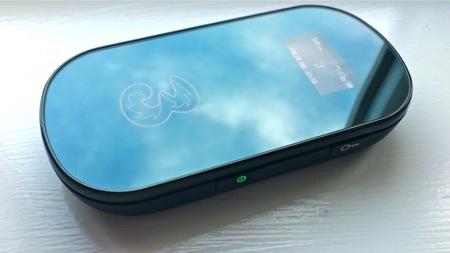
On the side of the MiFi you'll find the 'power' button and a second button to display your wireless SSID (network name) and security key. This is a vast improvement on having to remember the key, especially if you've changed it from the default. This will be favoured most by anyone connecting multiple devices, or allowing others to hook-up on a temporary basis.
But what about the speed?
A mobile network has the same issues to deal with as a landline connection. If you're a long way from your nearest base station, the maximum possible speed is limited by the laws of physics.
But, with the most 3G base stations in the UK, Three's coverage is pretty solid and you shouldn't be too far away from a site. 80 per cent of the network is HSPA+ enabled already, with the rest being upgraded in the coming months.
In 2012, Three could increase the speed from 21.6Mbps to 43.2Mbps (but the E586 maxes out at 21.6), so who needs 4G? Despite a network sharing deal with T-Mobile (soon to include Orange), Three maintains its own data network, geared towards mobile data. In fact, Three says that only 3 per cent of the network traffic it carries is voice.
Because it's portable, I opted to take the MiFi on the road. Well, on a train. I performed a series of speed tests with the E586 connected to a MacBook Air and to show the device in its best light, picked out the best result: a cool 14.12 megabits per second, with an uplink of just over 1.5Mbps.
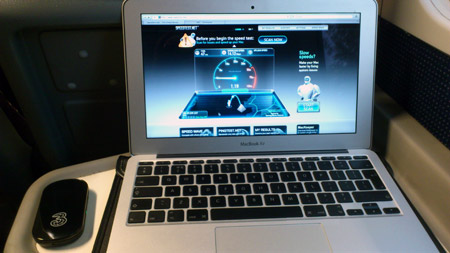

Naturally, speeds like this weren't always possible, but you'll be getting around 2-3Mbps almost everywhere you go, along with the lower latency that makes a significant difference when sending and receiving small bursts of data (like instant messages or tweets).
The only problem I experienced, which left me rather disappointed, was the battery life. If you leave it on you should expect little more than around 2-3 hours of connectivity before it gives up.
You can set the unit to disconnect after a set period of inactivity, but if you've got any device connected that sends and receives data in the background it'll probably stay on continuously.
You can charge the MiFi with any micro-USB cable, or even power it from a laptop. If you want to use it at home or work, to ditch your landline completely, you can plug it in to the bundled docking station and set the MiFi to never disconnect.
At £85 on prepay, with a SIM pre-loaded with 3GB of data, valid for three months, it isn't that expensive. Especially compared to multiple SIM cards. There are also contract deals, like £18.99 per month for 15GB (24-month contract) with the dongle supplied free.
If that's not enough, you can get the E586 in black or white, but personally the only thing I expect anyone is interested in is the speed – and given my own test results – the MiFi provides everything you could expect, and possibly more.
Three E586 HSPA+ Mobile Broadband

